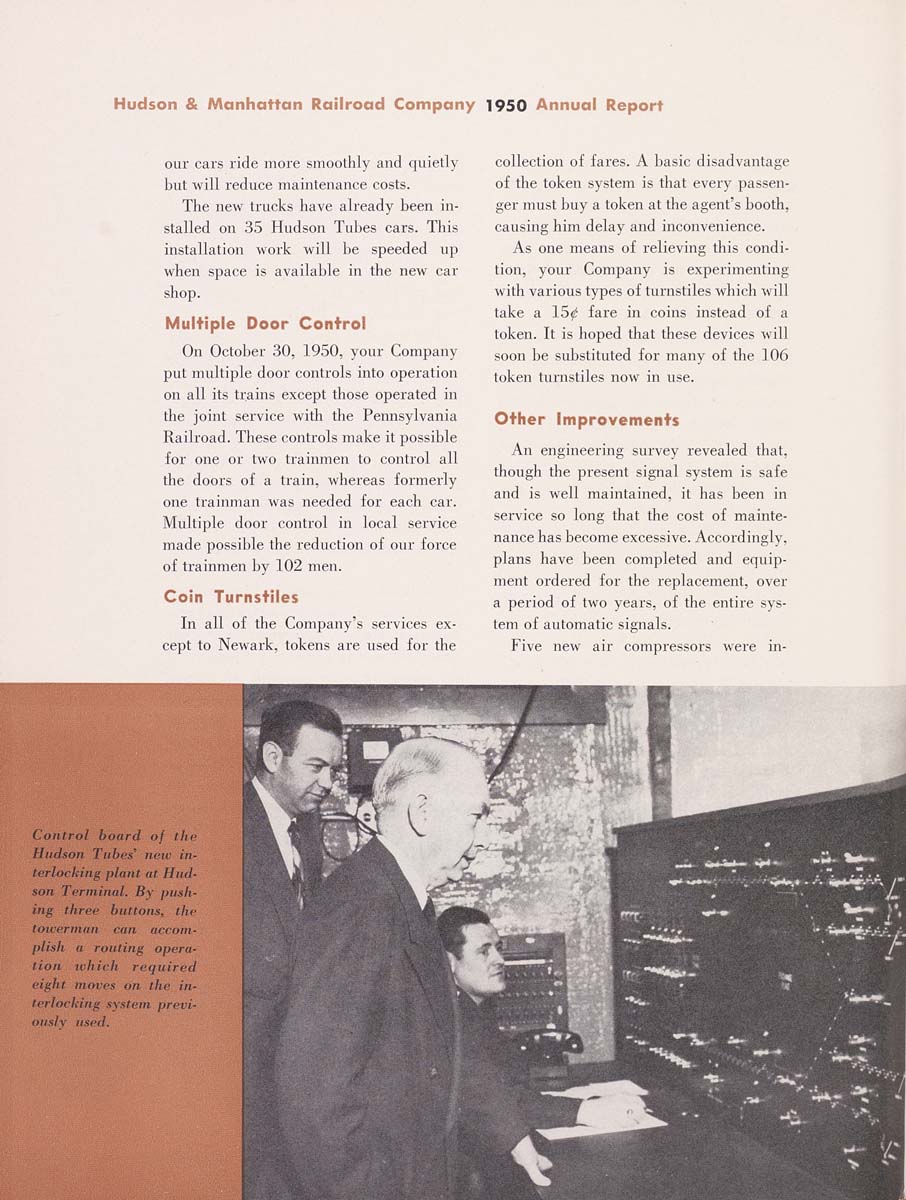Annual report of Hudson & Manhattan Railroad Company
(New York, N.Y. : Hudson and Manhattan Railroad Company )
|
||
|
|
|
|
| 1950: Page [12] |

Hudson & Manhattan Railroad Company 1950 Annual Report our cars ride more smoothly and quietly but will reduce maintenance costs. The new trucks have already been in¬ stalled on 35 Hudson Tubes cars. This installation work will be speeded up when space is available in the new car shop. Multiple Door Control On October 30, 1950, your Company put multiple door controls into operation on all its trains except those operated in the joint service with the Pennsylvania Railroad. These controls make it possible for one or two trainmen to control all the doors of a train, whereas formerly one trainman was needed for each car. Multiple door control in local service made possible the reduction of our force of trainmen by 102 men. Coin Turnstiles In all of the Company's services ex¬ cept to Newark, tokens are used for the collection of fares. A basic disadvantage of the token system is that every passen¬ ger must buy a token at the agent's booth, causing him delay and inconvenience. As one means of relieving this condi¬ tion, your Company is experimenting with various types of turnstiles which will take a 15^ fare in coins instead of a token. It is hoped that these devices will soon be substituted for many of the 106 token turnstiles now in use. other Improvements An engineering survey revealed that, though the present signal system is safe and is well maintained, it has been in service so long that the cost of mainte¬ nance has become excessive. Accordingly, plans have been completed and equip¬ ment ordered for the replacement, over a period of two years, of the entire sys¬ tem of automatic signals. Five new air compressors were in- Control board of the Hudson Tubes' new in¬ terlocking plant at Hud¬ son Terminal. By pii.sli- ing three buttons, the towerman can accom¬ plish a routing opera¬ tion tvhich required eight moves on the in¬ terlocking system previ¬ ously used. ^ |
| 1950: Page [12] |







